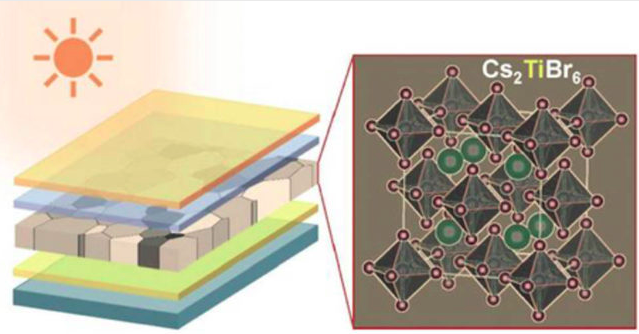Are Cesium Titanium(IV) Halides the long awaited replacement of lead in perovskite based solar cells?
Methylammonium lead halide (MAPbX3, X=Cl, Br, I) perovskites are semiconductor materials that have shown great promise as solar cell light absorbers. MAPbI3 has been shown to be a good sensitizer material for solar cells leading to high solar cell efficiencies (>20 %) within only a few years, comparable to that (>20 %) of the better-known material, Gallium Arsenide (GaAs). This performance is large attributed to its exceptional optoelectronic properties. In addition to this, its potential low cost has attracted the interest of researchers worldwide . However, there have been concerns regarding the toxicity of lead when these lead halide perovskites are produced in large quantities.
Cs2TiX6 thin films are highly stable under environmental (humidity/heat/light) stresses
Moreover, methylammonium (MA + ) is highly hygroscopic and volatile which renders it intrinsically unstable, with inadequate tolerance for thermal stress. Efforts have been made to identify other promising candidates via theoretical predictions with only few of being synthesized successfully. One such candidate which has been theoretically predicted and synthesized experimentally is Cesium Titanium (IV) Bromide (CsTiBr6) (Chen et al., 2018). The major advantage that Cs2Ti Br 6 possess over MAPbI 3 is that it is non-toxic. More so, where Ti is in its stable +4 oxidation state, it is expected to possess very high tolerance to environmental (e.g thermal and moisture) stresses.
First ever solar cells using Cs2TiBr6 thin films show a stable efficiency of up to 3.3
Thus, Cs2TiX6 (X=Cl, Br, I) is a potential all-inorganic lead- free hybrid perovskites that addresses both issues without sacrificing some of the key properties, for example, bandgaps, optical absorption, and defect tolerance. It is widely recognized that replacing MA + by cesium (Cs + ) in hybrid perovskite can significantly enhance their thermal/moisture stability. Furthermore, Ti is also earth-abundant, non-toxic, and biocompatible. These clear advantages of the Cs2TiX6 hybrid perovskite make it the promising material in the next generation of solar cells.
Meanwhile, we need to wait for other properties such as the dominant scattering mechanics and mobilities of charge carriers in this material to be determined before we can make a valid conclusion. Until then, let us keep our fingers crossed
References
Chen, M., Ju, M.-g., Carl, A. D., Chen, M., Ju, M.-g., Carl, A. D., Zong, Y., Grimm, R. L., and Gu, J. (2018). Cesium Titanium ( IV ) Bromide Thin Films Based Stable Lead-free Perovskite Solar Cells Cesium Titanium ( IV ) Bromide Thin Films Based Stable Lead-free Perovskite Solar Cells. Joule, 2(3):558–570.
